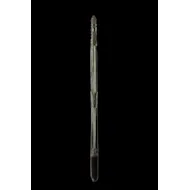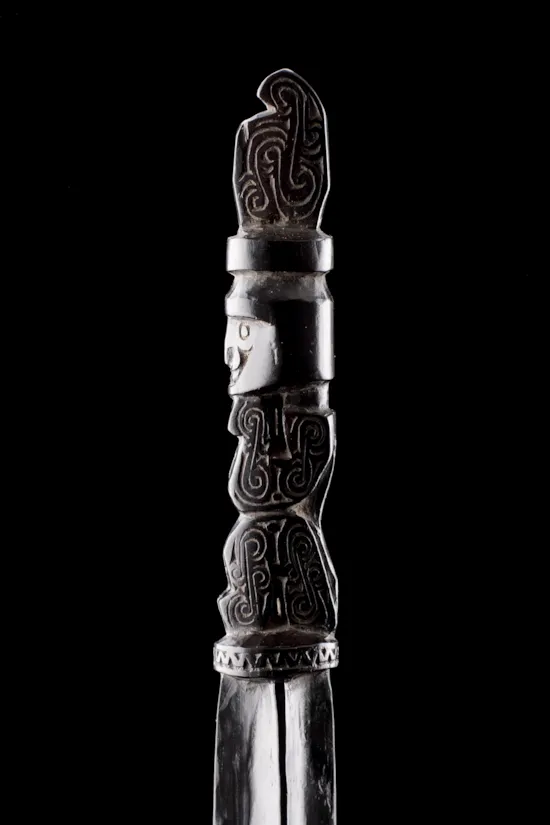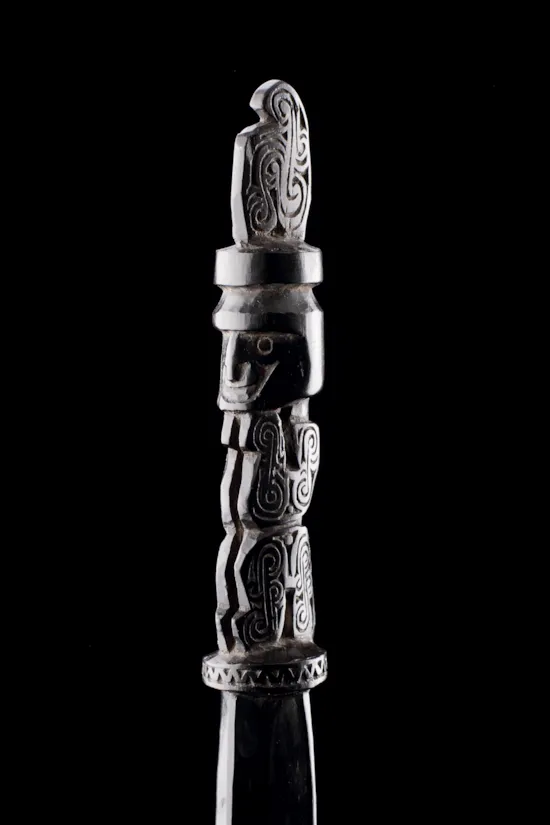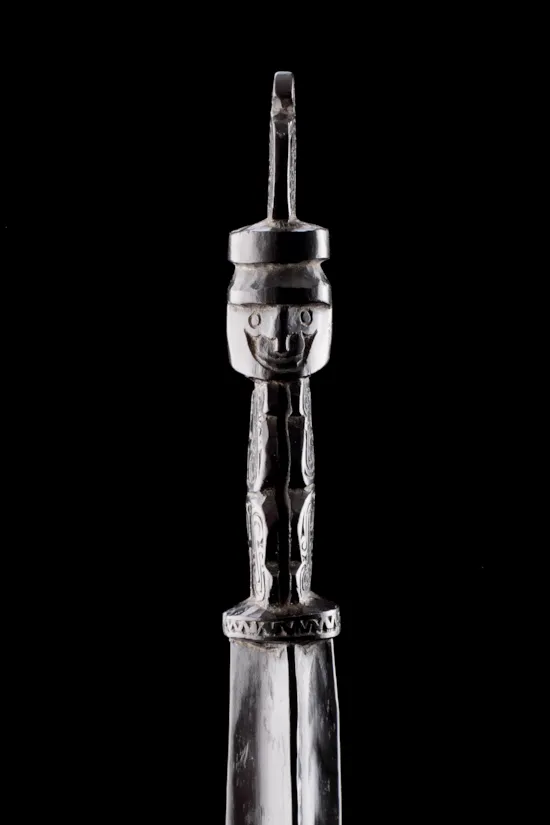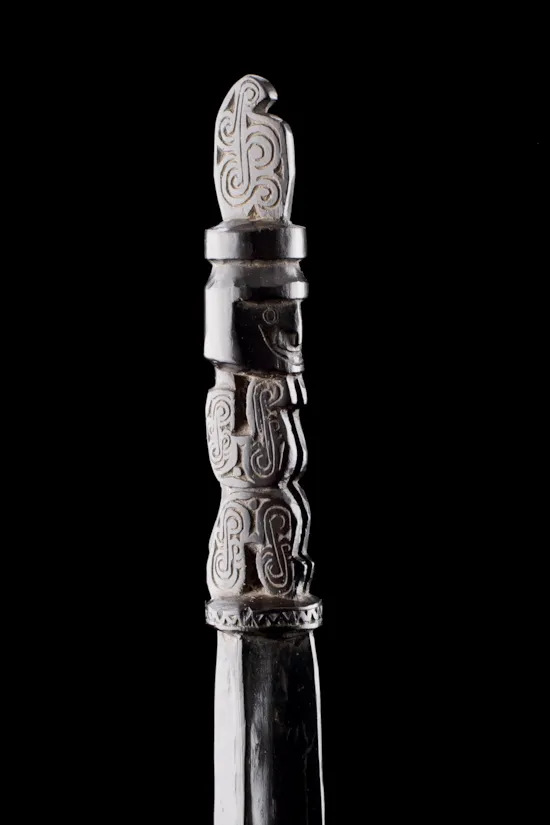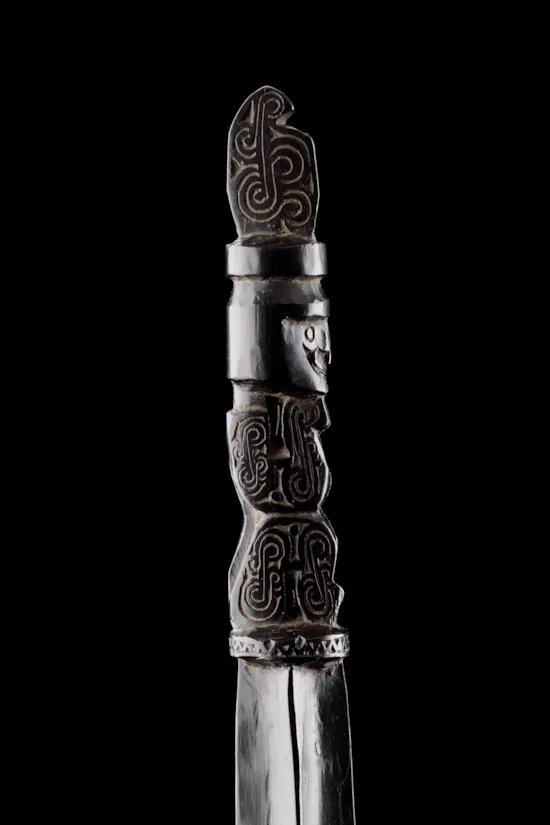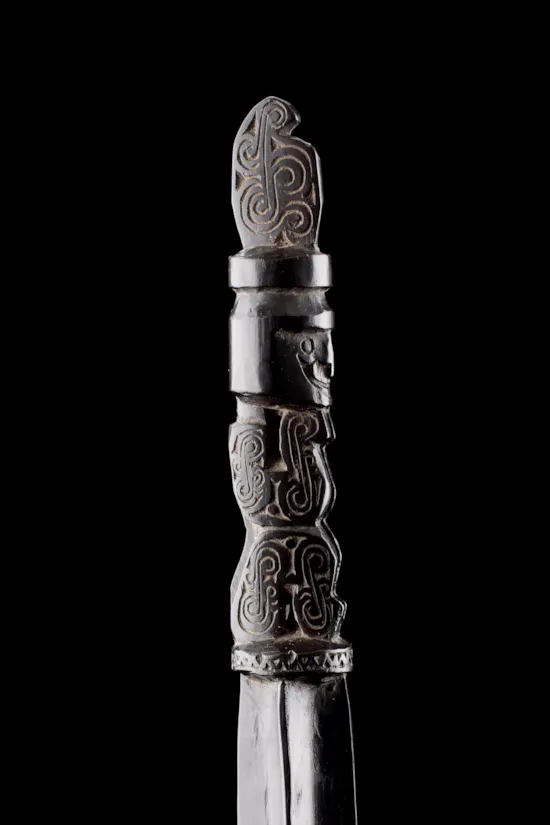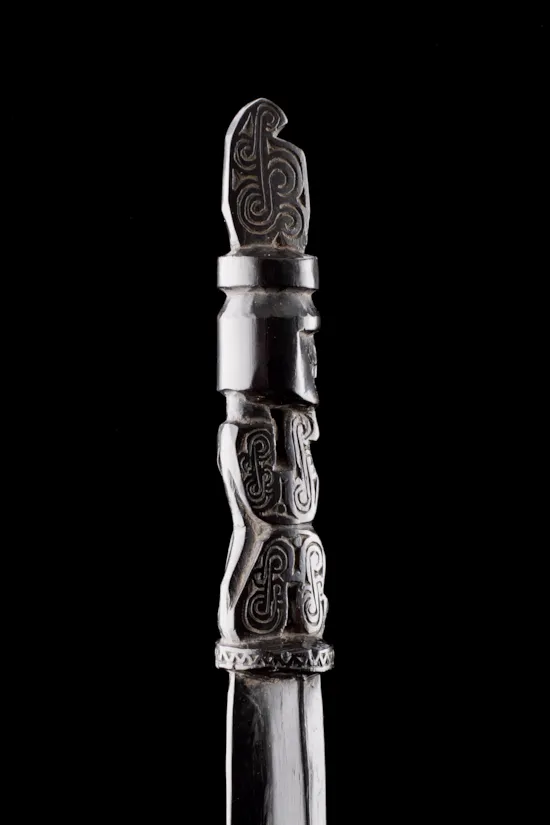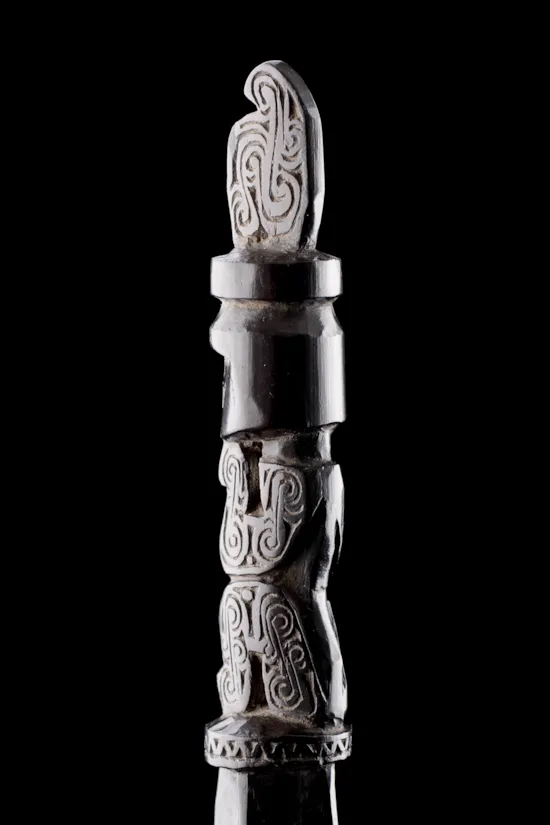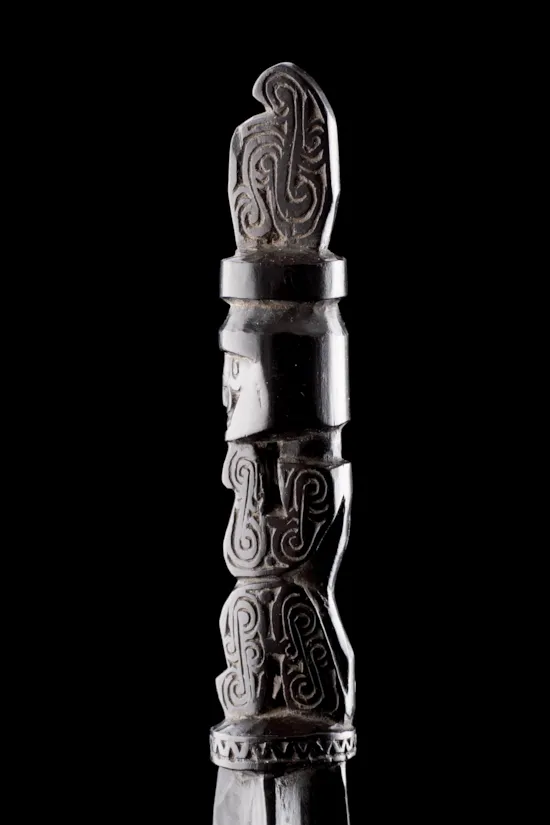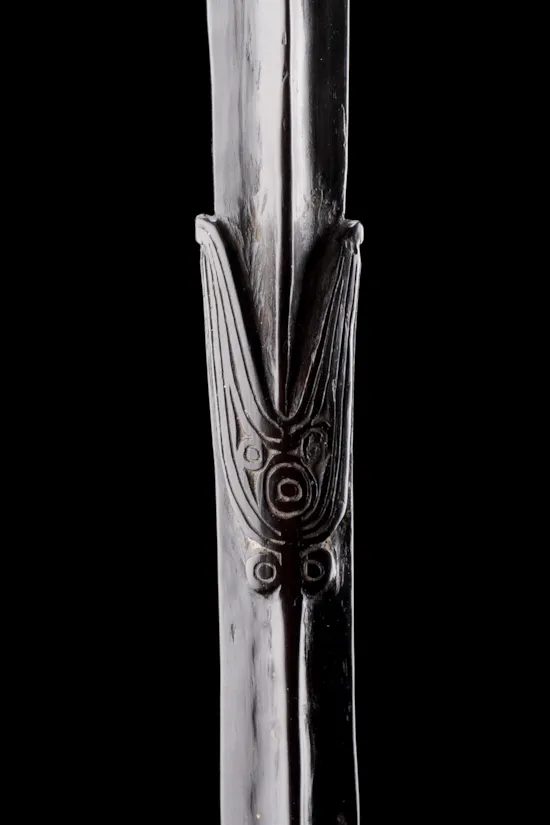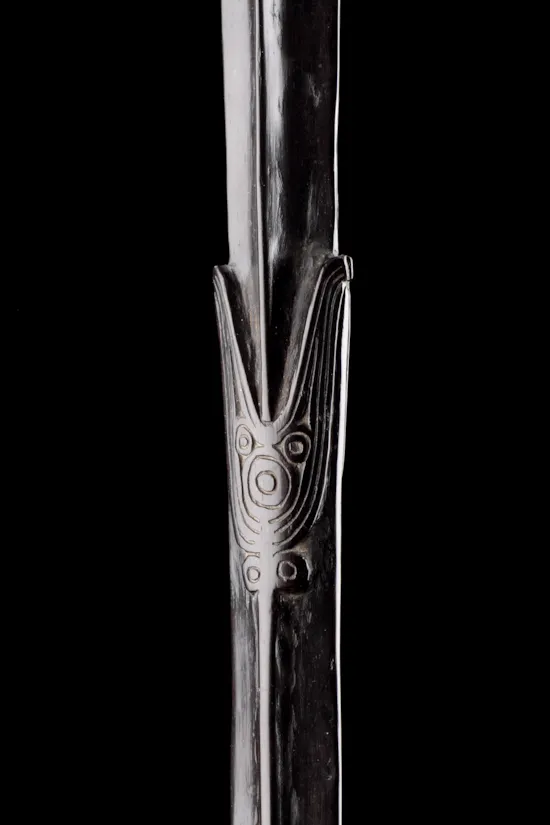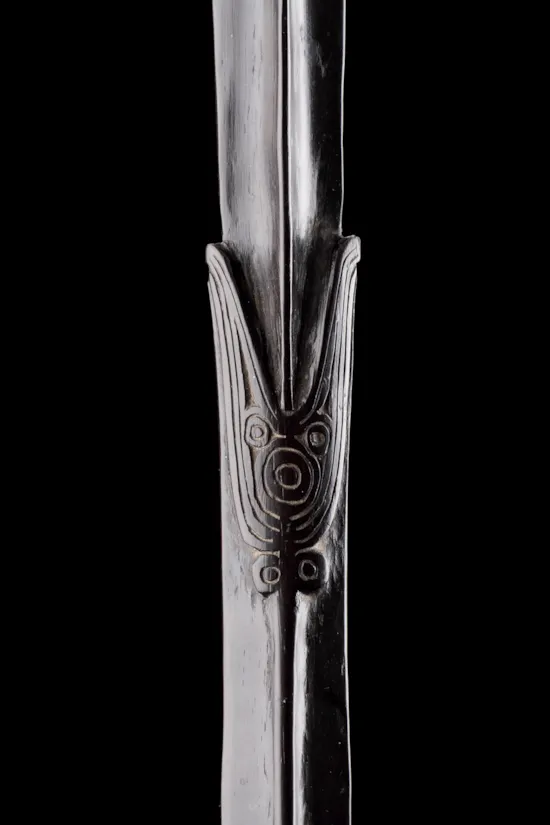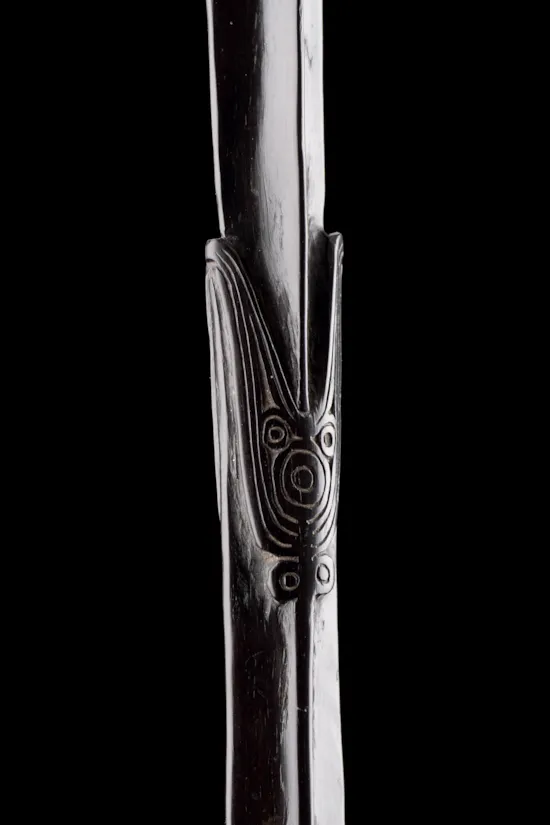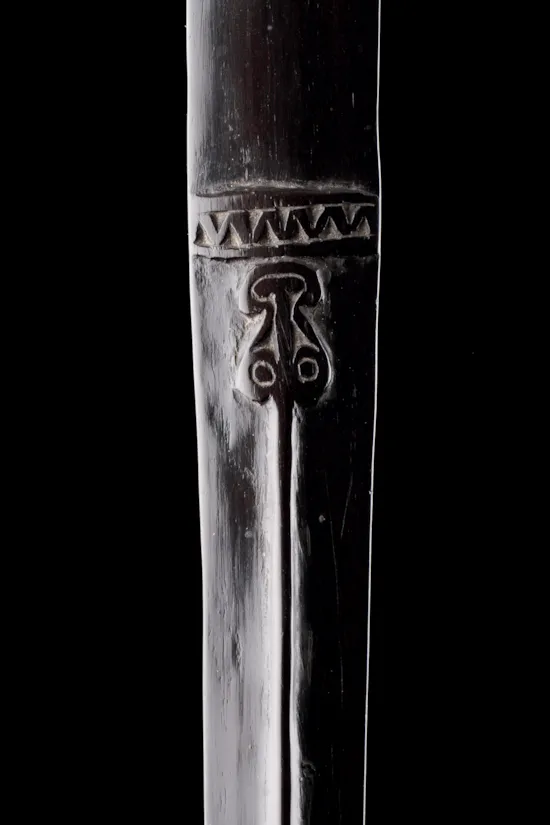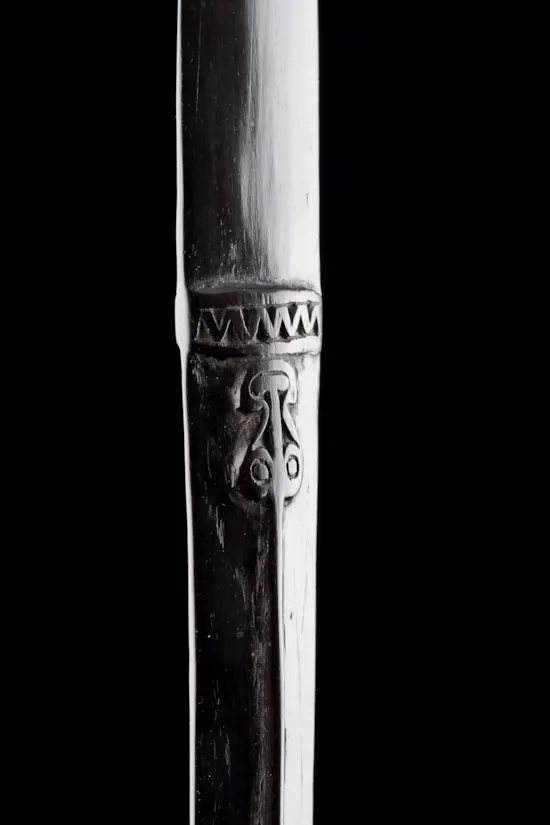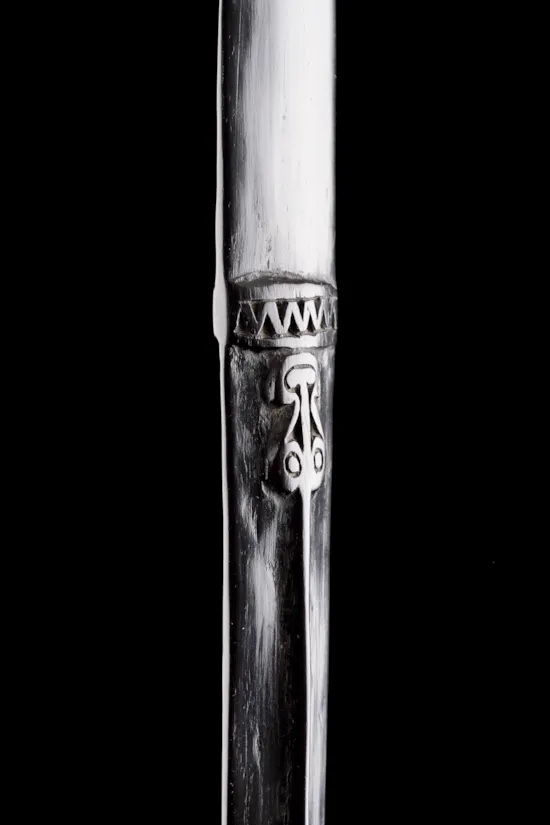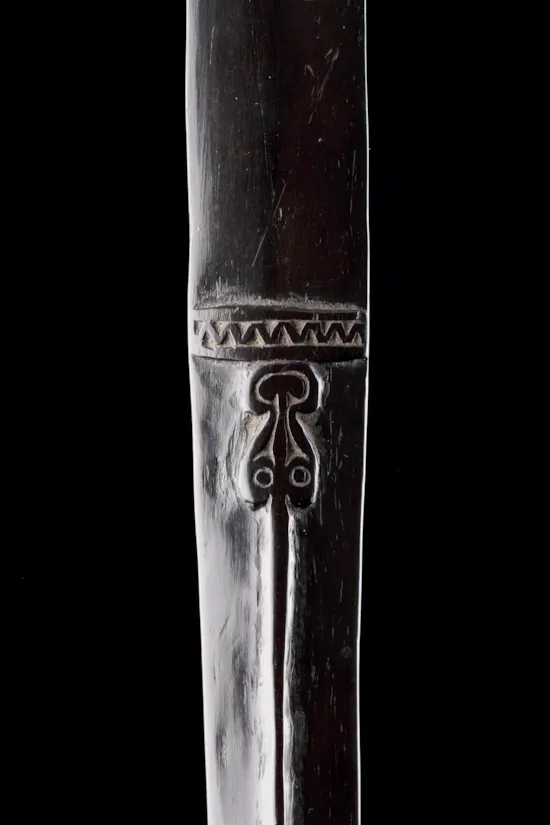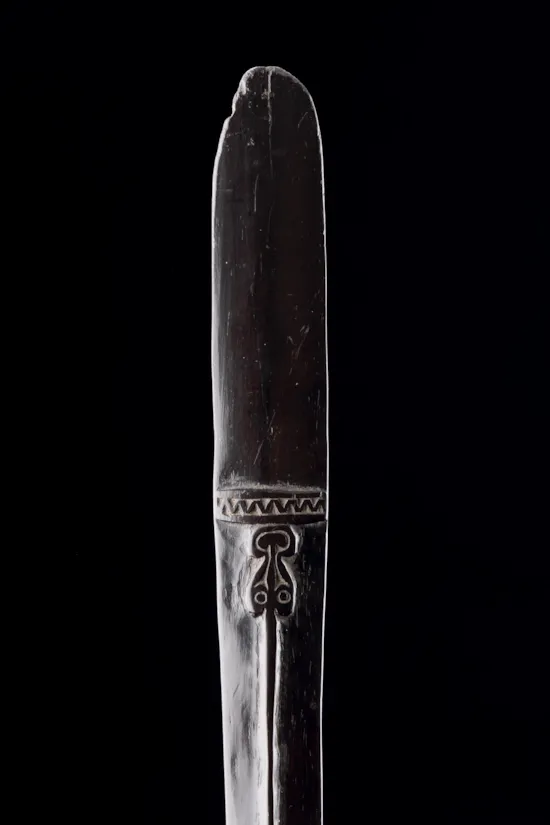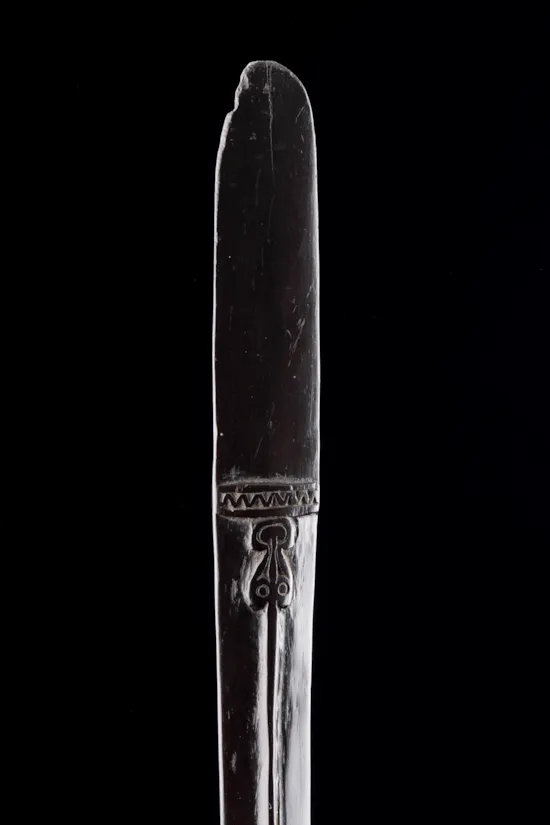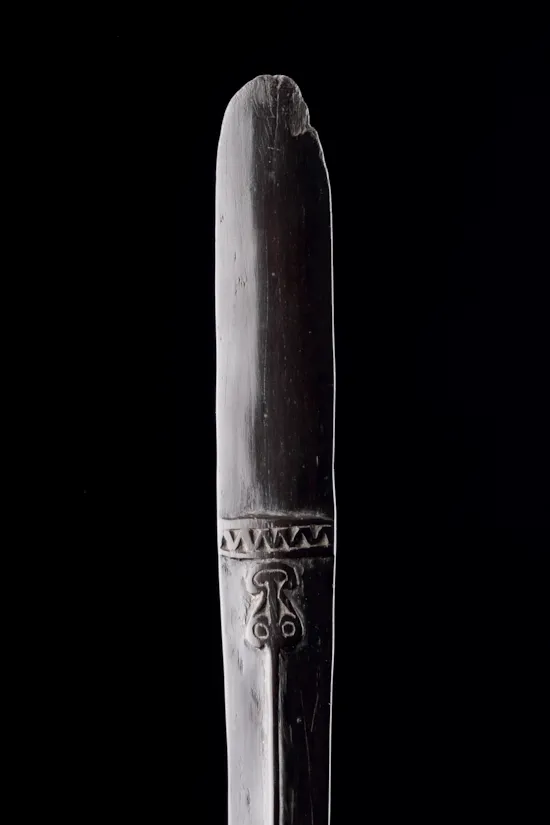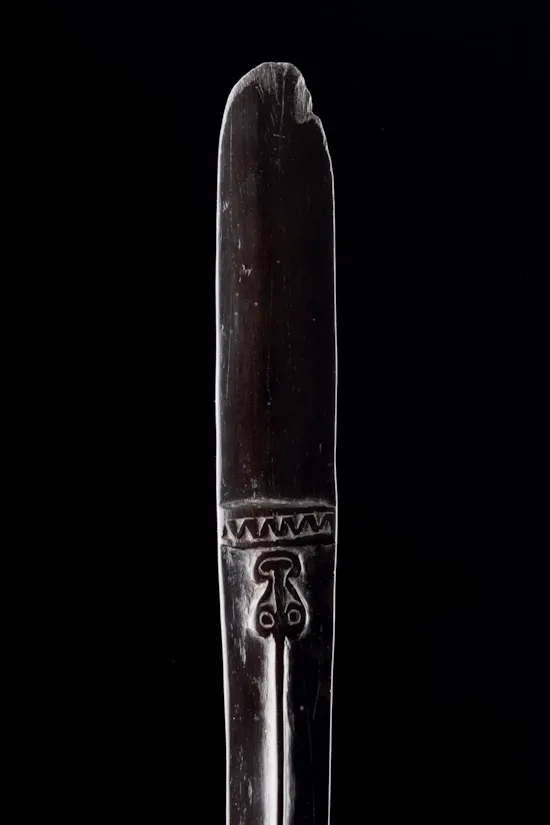Papua New Guinea Trobriand Islands Massim Carved Ebony Lime Spatula ‘Kena’
A Papua New Guinea Trobriand Islands Massim Carved Ebony Lime Spatula ‘Kena’ with Human Figural Finial Decorated with Interlocking Scrolls the Shaft Carved with Symbolic Motifs Representative of Birds Humans and the Sea
Old smooth silky patina
Old chip to the tip
Early 20th Century
Size: 57.5cm long - 22½ ins long / 60cm high - 23½ ins high (with base)
Old smooth silky patina
Old chip to the tip
Early 20th Century
Size: 57.5cm long - 22½ ins long / 60cm high - 23½ ins high (with base)
A Papua New Guinea Trobriand Islands Massim Carved Ebony Lime Spatula ‘Kena’ with Human Figural Finial Decorated with Interlocking Scrolls the Shaft Carved with Symbolic Motifs Representative of Birds Humans and the Sea
Old smooth silky patina
Old chip to the tip
Early 20th Century
Size: 57.5cm long - 22½ ins long / 60cm high - 23½ ins high (with base)
Old smooth silky patina
Old chip to the tip
Early 20th Century
Size: 57.5cm long - 22½ ins long / 60cm high - 23½ ins high (with base)
The term ‘Massim’ is thought to be a corruption of ‘Misima’ the name of an Island in the Louisiade Archipelago. At the end of the 19th century Western Christian missionary stations were established in the area when the population numbered around 38,000. Although tobacco is grown locally, it is the betel nut, the seed of the Areca palm which is most used as a stimulant. People with good teeth crush the nut in their mouths whilst the older generation use a mortar and pestle. The leaf or fruit of the betel plant, and a little lime taken from a pot with the aid of a lime spatula, is added to the crushed and chewed stimulating nut. The lime is produced by burning coral which is then powdered and put into bowls, often made of coconut. The Massim do not practice ancestor worship, but it is believed that the human figures carved to the top of the spatula represent spirits that will provide protection to their owner.
The term ‘Massim’ is thought to be a corruption of ‘Misima’ the name of an Island in the Louisiade Archipelago. At the end of the 19th century Western Christian missionary stations were established in the area when the population numbered around 38,000. Although tobacco is grown locally, it is the betel nut, the seed of the Areca palm which is most used as a stimulant. People with good teeth crush the nut in their mouths whilst the older generation use a mortar and pestle. The leaf or fruit of the betel plant, and a little lime taken from a pot with the aid of a lime spatula, is added to the crushed and chewed stimulating nut. The lime is produced by burning coral which is then powdered and put into bowls, often made of coconut. The Massim do not practice ancestor worship, but it is believed that the human figures carved to the top of the spatula represent spirits that will provide protection to their owner.
Papua New Guinea Trobriand Islands Massim Carved Ebony Lime Spatula ‘Kena’
